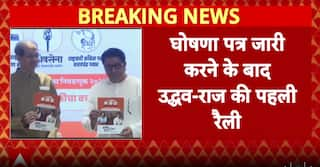Half Of The States Score Below National Average In Income Security Pillar For Senior Citizens
Rajasthan, Himachal Pradesh, Mizoram, and Chandigarh lead the rankings in Aged States, Relatively-Aged States, North Eastern States, and Union Territories categories.

Mumbai: States have performed notably worse in the income security pillar as over half of the states have a score below the national average of 33.03 in Income Security, the lowest across all pillars in the "Quality of Life for Elderly Index" released by Dr. Bibek Debroy, Chairman, Economic Advisory Council to the Prime Minister (EAC-PM).
Rajasthan, Himachal Pradesh, Mizoram, and Chandigarh lead the rankings in Aged States, Relatively-Aged States, North Eastern States, and Union Territories categories.
The Institute for Competitiveness has created the Index at the request of EAC-PM, and it sheds light on an issue often not mentioned- problems faced by the elderly.
The report identifies the regional patterns of aging across the Indian States and assesses the overall aging situation in India. The report presents a deeper insight into how well India is doing to support the well-being of its aging population.
The Index framework includes four pillars: Financial Well-being, Social Well-being, Health System and Income Security, and eight sub-pillars: Economic Empowerment, Educational Attainment & Employment, Social Status, Physical Security, Basic Health, Psychological Wellbeing, Social Security and Enabling Environment.
This Index broadens the way we understand the needs and opportunities of the elderly population in India.
It goes far beyond the adequacy of pensions and other forms of income support, which, though critical, often narrows policy thinking and debate about the needs of this age group. The Index highlights that the best way to improve the lives of the current and future generations of older people is by investing in health, education, and employment for young people today, said a government statement.
As Chairman, EAC-PM, Dr. Bibek Debroy, said, "India is often portrayed as a young society, with a consequent demographic dividend. But, as with every country that goes through a fast process of demographic transition, India also has greying cum aging problem. EAC-PM requested Dr. Amit Kapoor and his team at Institute for Competitiveness to do a report on issue that is often not mentioned- the problems faced by the elderly."
"Without a proper diagnostic tool to understand the implications of its aging population, planning for the elderly can become a challenge for policymakers. The Quality of Life for Elderly Index has been released to broaden the way we understand the needs and the opportunities of the elderly population in India. This Index measures the core domains of Economic, health, and social well-being of older people and provides the in-depth situation of elderly people in India. The Index can thus help the nation identify areas that need improvement and grab the current opportunity to start putting positive changes in motion for the next decades. The Index also promotes healthy competition among States through fair rankings and highlights the pillars and indicators they can improve. Using this Index as a tool, the State governments and the stakeholders can identify the areas they need to work upon to provide their older generation with a comfortable life." Said IFC chairman Dr. Amit Kapoor.
Key Highlights from the Report:
- The Health System pillar observes the highest national average, 66.97 at an all-India level, followed by 62.34 in Social Well-being. Financial Well-being observes a score of 44.7, which is lowered by the low performance of 21 States across the Education Attainment & Employment pillar, which showcases scope for improvement.
- States have performed particularly worse in the Income Security pillar because over half of the States have a score below the national average, i.e., 33.03 in Income Security, the lowest across all pillars. These pillar-wise analyses help States assess the state of the elderly population and identify existing gaps that obstruct their growth.
- Rajasthan and Himachal Pradesh are top-scoring regions in Aged and the Relatively Aged States, respectively. Chandigarh and Mizoram are top-scoring regions in Union Territory and North-East States category. The Aged States refer to States with an elderly population of more than 5 million, whereas the Relatively Aged States refer to States with an Elderly population of less than 5 million.
Related Video
Union Budget 2025: Arvind Kejriwal lists the shortcomings of the Modi government's budget | ABP News | AAP





































